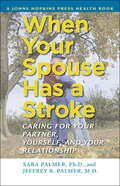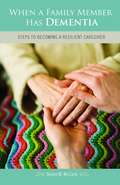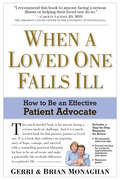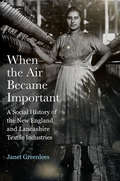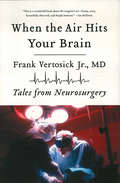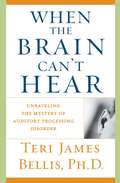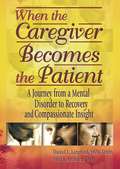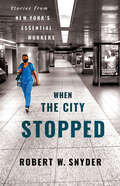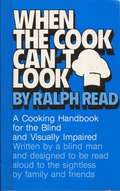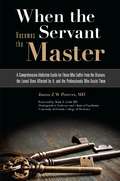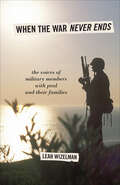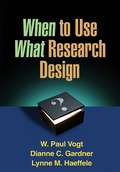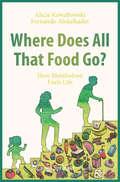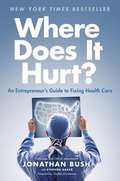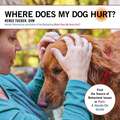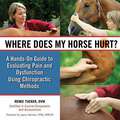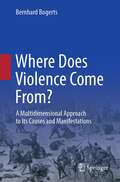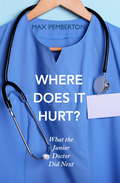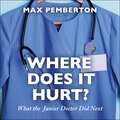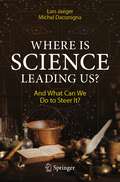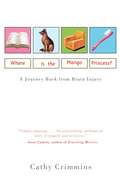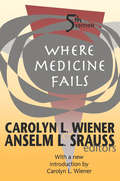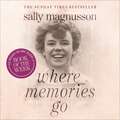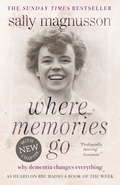- Table View
- List View
When Your Spouse Has a Stroke: Caring for Your Partner, Yourself, and Your Relationship (A Johns Hopkins Press Health Book)
by Sara Palmer Jeffrey B. PalmerA stroke can alter two people's lives in an instant. For the person who has had a stroke, simple tasks suddenly become difficult or impossible. For that person's partner, life seems to revolve mostly around the stroke survivor's needs. Such a drastic change naturally requires making many, sometimes taxing, adjustments. In this book, two experts in stroke recovery help couples deal with the impact of stroke on their lives and their relationship. Drs. Sara and Jeffrey Palmer explain how to overcome three major challenges:• providing quality care for your partner• maintaining or rebuilding your relationship• caring for yourself as an individualThe book invites you into the lives of real couples who are themselves coping with these challenges. Their experiences model how you can improve essential aspects of your relationship, including communication, roles and responsibilities, and sexuality. A list of practical tips summarizes each chapter, providing a handy reference guide to meeting each day's challenges.More than just a discussion of the medical and practical aspects of stroke and stroke recovery, this book focuses on the emotional, psychological, and social consequences of stroke and the deeply personal side of caregiving. When Your Spouse Has a Stroke will relieve your burden and strengthen your partnership.
When a Family Member Has Dementia: Steps to Becoming a Resilient Caregiver
by Susan MccurryThe following quote is taken from the "Introduction" of the book which was written by Dr. Linda Teri: "Dr. McCurry brings to the caregiving community this book of hope. By presenting glimpses of the caregivers she has worked with over her years of clinical work, she shows the rich diversity of possibilities. She illustrates how things can improve, as well as how to cope with those times when it feels like things can only get worse. For caregivers just embarking on this mission, Dr. McCurry's compassion shines through. She will help you understand the disease process as well as how to deal with it. For experienced caregivers, whether family or friend, Dr. McCurry's insights may bring new ideas to old problems." Dr. McCurry offers many exercises designed to help people cope with the person who has dementia. The exercises and her suggestions are based on her knowledge of psychology and on her psychotherapeutic background.
When a Loved One Falls Ill: How to Be an Effective Patient Advocate
by Brian Monaghan Gerri MonaghanThe much-needed book for anyone with a loved one facing a serious illness. It is the book that’s a bible for how to make the potentially life-or-death decisions that every medical advocate, and every patient, must grapple with—especially now, as health care becomes ever more complicated. It is the practical blueprint for how to be a successful medical advocate. When Gerri Monaghan’s husband, Brian, then a fifty-nine-year-old lawyer at the top of his game, got the news that all of us dread—a diagnosis of brain tumors caused by Stage IV melanoma with a prognosis of three to six months to live—she knew that this was a challenge the two of them would fight together. Brian brought his enormous courage, attitude, and reserves of humor, and Gerri, with dogged determination, stood up again and again for what they needed—tirelessly researching options, reaching out to friends, family, and anyone who could help, resisting the status quo, and always thinking in terms of “we.”Together they tell their story, back and forth, punctuated throughout by Gerri’s top 50 tips for how to be an advocate: #1 Trust your intuition. #6 Create a battle plan. #15 Get copies of records. #26 Make doctors speak in a language that you understand. #33 Don’t schedule surgery during the holidays. #49 Remember, this is not a dress rehearsal.
When the Air Became Important: A Social History of the New England and Lancashire Textile Industries (Critical Issues in Health and Medicine)
by Janet GreenleesIn When the Air Became Important, medical historian Janet Greenlees examines the working environments of the heartlands of the British and American cotton textile industries from the nineteenth to the late twentieth centuries. Greenlees contends that the air quality within these pioneering workplaces was a key contributor to the health of the wider communities of which they were a part. Such enclosed environments, where large numbers of people labored in close quarters, were ideal settings for the rapid spread of diseases including tuberculosis, bronchitis and pneumonia. When workers left the factories for home, these diseases were transmitted throughout the local population, yet operatives also brought diseases into the factory. Other aerial hazards common to both the community and workplace included poor ventilation and noise. Emphasizing the importance of the peculiarities of place as well as employers’ balance of workers’ health against manufacturing needs, Greenlees’s pioneering book sheds light on the roots of contemporary environmentalism and occupational health reform. Her work highlights the complicated relationships among local business, local and national politics of health, and community priorities.
When the Air Hits Your Brain: Tales From Neurosurgery
by Frank Vertosick Jr.The story of one man's evolution from naive and ambitious young intern to world-class neurosurgeon. With poignant insight and humor, Frank Vertosick Jr., MD, describes some of the greatest challenges of his career, including a six-week-old infant with a tumor in her brain, a young man struck down in his prime by paraplegia, and a minister with a .22-caliber bullet lodged in his skull. Told through intimate portraits of Vertosick’s patients and unsparing yet fascinatingly detailed descriptions of surgical procedures, When the Air Hits Your Brain—the culmination of decades spent struggling to learn an unforgiving craft—illuminates both the mysteries of the mind and the realities of the operating room.
When the Brain Can't Hear
by Teri James BellisMillions of Americans have difficulty understanding spoken language. They're not deaf, autistic, or slow. They have APD. APD has been called the auditory equivalent of dyslexia, and its debilitatiting effects cross all ages, genders, and races. APD can cause children to fail in school and adults to suffer socially and in their careers, but until now, there has been little information available. Written by Dr. Teri James Bellis, one of the world's foremost authorities on APD, this is the first book on the subject that is completely accessible to the public. Through helpful checklists and case studies, you'll finally discover the answers you need, as well as proven strategies for living with APD. Comprehensive and powerfully prescriptive, this book contains vital information for anyone who suffers from this serious disorder. When the Brain Can't Hear gives you all the latest information: What is APD? how APD affects children APD in adults diagnosis and testing treatment options living successfully with APD memory enhancement and other coping techniques
When the Brain Can't Hear: Unraveling the Mystery of Auditory Processing Disorder
by Teri James BellisThe author, diagnosed with auditory processing disorder in adulthood, provides an explanation of the disorder and how to live with it.
When the Caregiver Becomes the Patient: A Journey from a Mental Disorder to Recovery and Compassionate Insight
by Harold G Koenig Emil J Authelet Daniel L LangfordExamine a compelling account of a professional caregiver’s inspirational struggle with a mind/body illness and the renewed sense of compassion his recovery provides.This uplifting narrative is the story of a caregiving professional stricken by panic attacks, a wounded healer desperate to be healed. When the Caregiver Becomes the Patient is the candid and compassionate first-hand account of Daniel Langford’s struggle with the anxiety disorder that signals a physical, cognitive, and emotional crisis that paralyzes him, despite his extensive background as a health care professional, social worker, and pastoral minister. His journey from the disorder’s horrifying onset to the understanding and acceptance of its roots, and finally, to an insight that evokes a renewed appreciation for the human spirit is an inspirational guide to healing and recovery.The anecdotal form of When the Caregiver Becomes the Patient lends itself to a personal retelling of Langford’s struggle, detailing his sessions with family physician Dr. David Betat, and colleague and co-author Dr. Emil Authelet as they explore the biopsychosocial and spiritual dimension of Langford’s attacks. Their informal dialogues serve as a model of how a lateral relationship between colleagues can create an environment for healing and recovery that can be passed on to others. The book also critiques and reviews existing literature on panic attacks and anxiety disorders related to the author’s search for understanding.When the Caregiver Becomes the Patient examines: panic attacks--cause, treatment, and recovery a critique of existing literature on panic attacks clinical and spiritual perspectives on anxiety disorders critical elements of the healing process effects on the caregiver’s relationship with his/her client a fresh model for the caregiver/patient relationshipAn essential resource for caregivers, counselors and therapists, educators, physicians, and health care and religious professionals, as well as those searching for an understanding of anxiety disorders, When the Caregiver Becomes the Patient reassures those who receive care that the care giver struggles with life as well. That understanding of the mutuality of pain and recovery creates a connection that helps ease the isolation that often accompanies suffering.
When the City Stopped: Stories from New York's Essential Workers
by Robert W. SnyderIn When the City Stopped, Robert Snyder tells the story of COVID-19 in the words of ordinary New Yorkers, illuminating the fear and uncertainty of life in the early weeks and months, as well as the solidarity that sustained the city. New Yorkers were "alone together," separated by the protective measures of social distancing and the fundamental inequalities of life and work in New York City. Through their personal accounts, we see that while many worked from home, others knowingly exposed themselves to the dangers of the pandemic as they drove buses, ran subways, answered 911 calls, tended to the sick, and made and delivered meals. Snyder builds bridges of knowledge and empathy between those who bore dangerous burdens and those who lived in relative safety. The story is told through the words of health care workers, grocery clerks, transit workers, and community activists who recount their experiences in poems, first-person narratives, and interviews. When the City Stopped preserves for future generations what it was like to be in New York when it was at the center of the pandemic.
When the Cook Can't Look: A Cooking Handbook for the Blind and Visually Impaired
by Ralph Read<P>This cooking handbook, designed to be read to the blind and visually impaired by a relative or friend, is written by one who is most qualified-- a blind person. <P>Ralph Read lost his sight in adulthood and now, from personal experience, makes available to other sightless individuals his innovative, sensible and safe methods for coping in the kitchen.
When the Servant Becomes the Master
by Mark S. Gold Jason Z.W. PowersThe definitive guide to addiction that addresses misinformation and stigma, humanizes the disease within a framework of science, research, and personal experience, and provides a wealth of information on the various forms addiction takes as well as rich data regarding treatments.
When the War Never Ends: The Voices of Military Members with PTSD and Their Families
by Leah WizelmanVeterans with PTSD speak: &“Anyone wanting to understand what it is to have a &‘flashback&’ will learn more from these firsthand accounts than from any textbook.&” ―The British Journal of Psychiatry The chances of service members developing PTSD after military-related traumas is, according to a U.S. study, at least thirty percent. The effects can be devastating, ranging from distressing flashbacks to nightmares, sleep disorders, physical symptoms, irritability, aggressions, and memory and concentration problems. These symptoms often cause severe impairment in all areas of life and may lead to despair and hopelessness. PTSD is neither a localized nor a temporary problem. Here, Leah Wizelman relates the true stories of service members from different service branches and ranks from the United States, Canada, Australia, and Germany, who were participants in various wars (Vietnam, Gulf War, Iraq, Afghanistan, Grenada) and peace missions (Kosovo, Bosnia, Croatia, Cambodia, Somalia, Cyprus, Haiti). They talk openly about their lives after trauma and share their fates with the reader. Spouses of affected military members also tell their stories. They talk about the challenges loved ones face when living with a partner with PTSD, how it affects their children, and how they manage to cope. As these stories show all too vividly, military-related PTSD has not been dealt with effectively or with enough empathy or sympathy. Those affected by PTSD will realize that they are not alone in their suffering—and others will gain insight into the realities of this challenging disorder. &“I highly recommend this volume to all who seek to understand combat-related PTSD.&” —Kathryn M. Magruder, MPH., PhD, Department of Psychiatry & Behavioral Sciences, Military Science Division, Medical University of South Carolina
When to Use What Research Design
by W. Paul Vogt Dianne C. GardnerSystematic, practical, and accessible, this is the first book to focus on finding the most defensible design for a particular research question. Thoughtful guidelines are provided for weighing the advantages and disadvantages of various methods, including qualitative, quantitative, and mixed methods designs. The book can be read sequentially or readers can dip into chapters on specific stages of research (basic design choices, selecting and sampling participants, addressing ethical issues) or data collection methods (surveys, interviews, experiments, observations, archival studies, and combined methods). Many chapter headings and subheadings are written as questions, helping readers quickly find the answers they need to make informed choices that will affect the later analysis and interpretation of their data. Useful features include Easy-to-navigate part and chapter structure. Engaging research examples from a variety of fields. End-of-chapter tables that summarize the main points covered. Detailed suggestions for further reading at the end of each chapter. Integration of data collection, sampling, and research ethics in one volume. Comprehensive glossary.
Where Does All That Food Go?: How Metabolism Fuels Life
by Alicia Kowaltowski Fernando AbdulkaderMost of us eat (or incorporate into our bodies) quite a bit of stuff that does not look, act or function even remotely like us. Unless our food mysteriously disappears inside of us, this must mean we change its molecular structure in some way. In fact, we are constantly modifying our molecules through chemical reactions, which together constitute our Metabolism. At any given moment, we transform (metabolize) millions of molecules within our bodies, building new ones, breaking down others, and exchanging them with the world around us. Metabolism is much more than the reason you gain weight when you overeat, it is a process that is so central for life that it defines what a living being is. We will explore what metabolism is, how these chemical reactions that constitute Metabolism are organized and how they are regulated (including the effects of hormones). We will follow the transformations of each type of nutrient (carbohydrates, proteins and lipids) within our bodies and cells, from the mouth, through our intestines and then within the different organs in our body. We will discuss metabolic and evolutionary reasons why so many people today struggle with excessive weight gain, and why some (rarer) people find it hard to gain weight, even when eating large amounts. We will also discuss changes in metabolism with diseases such as diabetes and heart attack, as well as conditions such as exercise and aging.
Where Does It Hurt?: An Entrepreneur's Guide to Fixing Health Care
by Stephen Baker Jonathan BushA bold new remedy for the sprawling and wasteful health care industry<P> Where else but the doctor's office do you have to fill out a form on a clipboard? Have you noticed that hospital bills are almost unintelligible, except for the absurdly high dollar amount? Why is it that technology in other industries drives prices down, but in health care it's the reverse? And why, in health care, is the customer so often treated as a mere bystander--and an ignorant one at that?<P> The same American medical establishment that saves lives and performs wondrous miracles is also a $2.7 trillion industry in deep dysfunction. And now, with the Affordable Care Act (Obamacare), it is called on to extend full benefits to tens of millions of newly insured. You might think that this would leave us with a bleak choice-- either to devote more of our national budget to health care or to make do with less of it. But there's another path.<P> In this provocative book, Jonathan Bush, cofounder and CEO of athenahealth, calls for a revolution in health care to give customers more choices, freedom, power, and information, and at far lower prices. With humor and a tell-it-likeit- is style, he picks up insights and ideas from his days as an ambulance driver in New Orleans, an army medic, and an entrepreneur launching a birthing start-up in San Diego. In struggling to save that dying business, Bush's team created a software program that eventually became athenahealth, a cloud-based services company that handles electronic medical records, billing, and patient communications for more than fifty thousand medical providers nationwide.<P> Bush calls for disruption of the status quo through new business models, new payment models, and new technologies that give patients more control of their care and enhance the physicianpatient experience. He shows how this is already happening. From birthing centers in Florida to urgent care centers in West Virginia, upstarts are disrupting health care by focusing on efficiency, innovation, and customer service. Bush offers a vision and plan for change while bringing a breakthrough perspective to the debates surrounding Obamacare.<P> You'll learn how:<P> * Well-intended government regulations prop up overpriced incumbents and slow the pace of innovation.<P> * Focused, profit-driven disrupters are chipping away at the dominance of hospitals by offering routine procedures at lower cost.<P> * Scrappy digital start-ups are equipping providers and patients with new apps and technologies to access medical data and take control of care.<P> * Making informed choices about the care we receive and pay for will enable a more humane and satisfying health care system to emerge.<P> Bush's plan calls for Americans not only to demand more from providers but also to accept more responsibility for our health, to weigh risks and make hard choices--in short, to take back control of an industry that is central to our lives and our economy.
Where Does My Dog Hurt
by Renee TuckerA do-it-yourself method of determining when and where your dog hurts.Keep your dog pain-free and feeling and performing his best! Introducing 23 simple body checkups you can do at home on your dog. This remarkably easy-to-follow book helps you:Clear up behavior problems or training issues you may have struggled with for months.Become familiar with your dog's normal range of movement so you can prevent minor issues from becoming major.Tune in to areas of temporary or chronic discomfort so you can offer relief as needed.Solve &“mystery&” limps, gimps, and lamenesses.Save thousands of dollars by avoiding expensive diagnostics that leave you with more questions.Captain your dog's team of veterinarian, trainer, chiropractor, and other therapists with confidence.Keep your dog active and happy for more months of the year, and more years of his life.Clear, colorful anatomical illustrations and how-to photographs demonstrate each body checkup, from nose to tail. Sensible organization allows you to move purposefully and progressively when trying to pinpoint a problem, while also ensuring that it is easy to find what you need, when you need it. With considerations for all canines, of every size and breed, and the goal of optimal health and a vibrant quality of life, this practical book is for everyone who counts a dog as a friend or family member.
Where Does My Horse Hurt?
by Renee TuckerKeep your horse pain-free and performing his best!Introducing 27 simple body checkups you can do on your horse,Where Does My Horse Hurt? is a do-it-yourself method for determining when and where your horse hurts. With this easy-to-follow book, conveniently spiral-bound so you can lay it open on your tack trunk and follow the instructions as you work on your horse you will:Become familiar with your horse's normal range of movement so you can prevent minor issues from becoming major.Stay in tune with areas of temporary or chronic discomfort so you can offer relief as needed.Solve mystery or phantom lamenesses that come and go seemingly without reason.Save thousands of dollars by avoiding expensive diagnostics that rarely get you answers.Learn how to discuss potential problem areas with farriers, veterinarians, and bodyworkers.Keep your horse actively and happily in work for more months of the year, and more years of his life.
Where Does Violence Come From?: A Multidimensional Approach to Its Causes and Manifestations
by Bernhard BogertsWhere does violence come from? How can people do such things? These are often the first questions that arise when we witness violence in the in the media or in real life. This book provides comprehensive answers by combining the explanatory approaches from criminology, sociology, psychology, psychiatry, brain research, genetics, pedagogy, historical sciences, and justice into a big, exciting, and comprehensible picture - in an entertaining way with current, state-of-the art science(s). Multiple case studies are presented that show us the frightening diversity of human violence: acts of violence by individual perpetrators; violence between groups; riots and tumults by gangs and hooligans; violent ethnic and religious conflicts; extreme violence in the form of amok and terror; and up to armed conflicts, pogroms, and genocide. Last but not least, the knowledge gained from this book can help answer another big question: how can violence be contained or even prevented? From the contents: How and where does violence originate in our brain?Why has a tendency towards violence become established as part of our behavioural repertoire in the development of humankind?What influences on personality development can lead to violent characters?How often is violence the product of a pathological psyche? Do genes play a role?Which social constellations contribute?What are the causes of rampage and terror?What is known about the relationship between religion and violence?
Where Does it Hurt?: What the Junior Doctor did next
by Max Pemberton'Treats a grim subject with warmth and self-deprecating good humour ... equally enlightening sequel' Daily MailThe sequel to the bestselling Trust Me, I'm a (Junior) Doctor. The junior doctor is back, but working on the streets for the Phoenix Outreach Project. Unfortunately, his first year in a hospital hasn't quite prepared him for it ...He's into his second year of medicine, but this time Max is out of the wards and onto the streets, working for the Phoenix Outreach Project.Fuelled by tea and more enthusiasm than experience, he attempts to locate and treat a wide and colourful range of patients that somehow his first year on the wards didn't prepare him for . . . from Molly the 80-year-old drugs mule and God in a Tesco car park, to middle-class mums addicted to appearances and pain killers in equal measure.His friends don't approve of the turn his career is taking, his mother is worried and the public spit at him, but Max is determined to make a difference. Despite warnings that miracles are rare, and that not everyone's life can be turned around, Max is still surprised by those that can be saved.Funny, touching and uplifting, Max goes from innocence to experience via dustbin-shopping-trips without ever losing his humanity.
Where Does it Hurt?: What the Junior Doctor did next
by Max Pemberton'Treats a grim subject with warmth and self-deprecating good humour ... equally enlightening sequel' Daily MailThe sequel to the bestselling Trust Me, I'm a (Junior) Doctor. The junior doctor is back, but working on the streets for the Phoenix Outreach Project. Unfortunately, his first year in a hospital hasn't quite prepared him for it ...He's into his second year of medicine, but this time Max is out of the wards and onto the streets, working for the Phoenix Outreach Project.Fuelled by tea and more enthusiasm than experience, he attempts to locate and treat a wide and colourful range of patients that somehow his first year on the wards didn't prepare him for . . . from Molly the 80-year-old drugs mule and God in a Tesco car park, to middle-class mums addicted to appearances and pain killers in equal measure.His friends don't approve of the turn his career is taking, his mother is worried and the public spit at him, but Max is determined to make a difference. Despite warnings that miracles are rare, and that not everyone's life can be turned around, Max is still surprised by those that can be saved.Funny, touching and uplifting, Max goes from innocence to experience via dustbin-shopping-trips without ever losing his humanity.(P) 2020 Hodder & Stoughton Ltd
Where Is Science Leading Us?: And What Can We Do to Steer It?
by Lars Jaeger Michel DacorognaThis book charts the evolution of the sciences and technologies that have shaped our modern age like nothing else in the last 60 years. As well as describing many exciting developments, it will also highlight the challenges and dangers of the technologies that have emerged from them. While science and technology have brought about enormous and often astonishing improvements in our quality of life, they have often also brought with them considerable risks, including the risk of human extinction. We place particular emphasis on the aspects that directly impact us as human beings: Artificial Intelligence (AI), enhancements of our brains/minds through innovative neuro-technologies, and the integration of nanotechnology into our bodies for early disease detection and elimination. What philosophical implications arise from these transformations? Authored by two theoretical physicists who are also experts in economics and capital markets - a rather rare combination - the book will explain the developments of modern science and the resulting technologies. It also examines the current state of play and emerging developments in a manner accessible to non-scientists. Based on their own experience and the analysis, the authors also propose ways in which science can progress more harmoniously in future.
Where Is the Mango Princess? A Journey Back from Brain Injury: A Journey Back From Brain Injury
by Cathy CrimminsHumorist Cathy Crimmins has written a deeply personal, wrenching, and often hilarious account of the effects of traumatic brain injury, not only on the victim, in this case her husband, but on the family.When her husband Alan is injured in a speedboat accident, Cathy Crimmins reluctantly assumes the role of caregiver and learns to cope with the person he has become. No longer the man who loved obscure Japanese cinema and wry humor, Crimmins' husband has emerged from the accident a childlike and unpredictable replica of his former self with a short attention span and a penchant for inane cartoons. Where Is the Mango Princess? is a breathtaking account that explores the very nature of personality--and the complexities of the heart.
Where Medicine Fails (Society Bks.)
by Anselm L Strauss Carolyn L. WienerThis fifth edition of Where Medicine Fails, like previous editions, argues for a broader definition of society's responsibilities to the ill than is commonly perceived to be the case. The authors examine the moral and economic implications of medical technology, especially in regard to fetal tissue transplant, cancer survival, childbirth, and dying, and provide a thoughtful assessment of the issues and challenges facing American hospitals. Seventeen chapters are new to this edition. The aim of this volume is to encourage serious examination of the current structure of health services and of the complicated facets of health care reform.
Where Memories Go: Why Dementia Changes Everything
by Sally MagnussonThis book began as an attempt to hold on to my witty, storytelling mother with the one thing I had to hand. Words. Then, as the enormity of the social crisis my family was part of began to dawn, I wrote with the thought that other forgotten lives might be nudged into the light along with hers. Dementia is one of the greatest social, medical, economic, scientific, philosophical and moral challenges of our times. I am a reporter. It became the biggest story of my life.Sally MagnussonRegarded as one of the finest journalists of her generation, Mamie Baird Magnusson's whole life was a celebration of words - words that she fought to retain in the grip of a disease which is fast becoming the scourge of the 21st century. Married to writer and broadcaster Magnus Magnusson, they had five children of whom Sally is the eldest. As well as chronicling the anguish, the frustrations and the unexpected laughs and joys that she and her sisters experienced while accompanying their beloved mother on the long dementia road for eight years until her death in 2012, Sally Magnusson seeks understanding from a range of experts and asks penetrating questions about how we treat older people, how we can face one of the greatest social, medical, economic and moral challenges of our times, and what it means to be human.An extraordinary and deeply personal memoir, a manifesto and a call to arms, in one searingly beautiful narrative.Find out more about the book and dementia at Facebook.com/WhereMemoriesGo(P)2014 John Murray Press
Where Memories Go: Why dementia changes everything - Now with a new chapter
by Sally MagnussonThis book began as an attempt to hold on to my witty, storytelling mother with the one thing I had to hand. Words. Then, as the enormity of the social crisis my family was part of began to dawn, I wrote with the thought that other forgotten lives might be nudged into the light along with hers. Dementia is one of the greatest social, medical, economic, scientific, philosophical and moral challenges of our times. I am a reporter. It became the biggest story of my life. - Sally Magnusson Regarded as one of the finest journalists of her generation, Mamie Baird Magnusson's whole life was a celebration of words - words that she fought to retain in the grip of a disease which is fast becoming the scourge of the 21st century. Married to writer and broadcaster Magnus Magnusson, they had five children of whom Sally is the eldest. As well as chronicling the anguish, the frustrations and the unexpected laughs and joys that she and her sisters experienced while accompanying their beloved mother on the long dementia road for eight years until her death in 2012, Sally Magnusson seeks understanding from a range of experts and asks penetrating questions about how we treat older people, how we can face one of the greatest social, medical, economic and moral challenges of our times, and what it means to be human. An extraordinary and deeply personal memoir, a manifesto and a call to arms, in one searingly beautiful narrative. Find out more about the book and dementia at Facebook.com/WhereMemoriesGo
